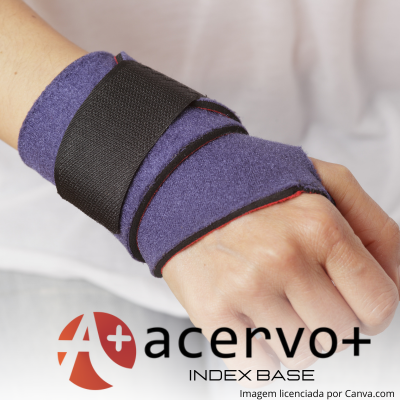Custo-benefício do WALANT da cirurgia ambulatorial da síndrome do túnel do carpo
##plugins.themes.bootstrap3.article.main##
Resumo
Objetivos: Comparar tempo de procedimento, custos e intercorrências, entre os procedimentos para correção da STC utilizando a técnica WALANT em ambulatório e no centro cirúrgico convencional. Métodos: Trata-se de um ensaio clínico randomizado com 47 pacientes, com indicação absoluta de realização de cirurgia, submetidos ao procedimento cirúrgico de abertura do Ligamento transverso do carpo. Os pacientes foram sorteados em um grupo que fez a cirurgia ambulatorial e outro no centro cirúrgico convencional, avaliou-se tempo de procedimento, custo total e intercorrências peri-operatórias. As variáveis e medidas de resultado foram plotadas e submetidas ao teste de normalidade de t-student, foram utilizados os testes Qui- quadrado e de Mann Whitney, quando indicados, utilizando-se o software SPSS (versão 21). Resultados: Entre os 47 pacientes, 25 foram submetidos ao procedimento em ambiente ambulatorial e 22 no centro cirúrgico convencional. Observou-se, um menor tempo de preparo, de cirurgia e de internamento dos pacientes do grupo ambulatorial. Neste grupo, também se observou menor custo e menos intercorrências. Conclusão: A técnica WALANT empregada ambulatorialmente, para a cirurgia de descompressão do túnel do carpo é segura, eficaz e proporciona um menor tempo de internamento hospitalar, uma diminuição significativa nos custos médico-hospitalares e menores casos de intercorrências.
##plugins.themes.bootstrap3.article.details##
Copyright © | Todos os direitos reservados.
A revista detém os direitos autorais exclusivos de publicação deste artigo nos termos da lei 9610/98.
Reprodução parcial
É livre o uso de partes do texto, figuras e questionário do artigo, sendo obrigatória a citação dos autores e revista.
Reprodução total
É expressamente proibida, devendo ser autorizada pela revista.
Referências
2. BAEK H, et al. Analysis of length of hospital stay using electronic health records: A statistical and data mining approach. Abe T, ed. PLoS ONE. 2018; 13(4): 0195901.
3. BLAND JDP, et al. Carpal tunnel syndrome. BMJ. 2007; 335(7615): 343–346.
4. CHAMMAS M, et al. Carpal tunnel syndrome - Part I (Anatomy, physiology, etiology and diagnosis). Rev bras ortop. 2014; 49: 429-436.
5. D’AURIA JL, et al. Accuracy of surgeon diagnosis in predicting carpal tunnel syndrome. Hand (N Y). 2021; 16(2): 179-182.
6. FENG B, et al. Prevalence and risk factors of self-reported wrist and hand symptoms and clinically confirmed carpal tunnel syndrome among office workers in China: a cross-sectional study. BMC Public Health. 2021; 21(1): 57.
7. FRANK SG e LALONDE DH. How acidic is the lidocaine we are injecting, and how much bicarbonate should we add? Canadian Journal of Plastic Surgery. 2012;2 0(2): 71-73.
8. JENKINS PJ, et al. The outcome of carpal tunnel decompression in patients with diabetes mellitus. J Bone Joint Surg Br. 2012; 94(6): 811-814.
9. KI LEE S, et al. A randomized controlled trial of minor hand surgeries comparing wide awake local anesthesia no tourniquet and local anesthesia with tourniquet. Orthopaedics & Traumatology: Surgery & Research. 2020; 106(8): 1645-1651.
10. LALONDE DH e WONG A. Dosage of local anesthesia in wide awake hand surgery. J Hand Surg Am. 2013; 38(10): 2025-2028.
11. LECH L, et al. Open carpal tunnel release under walant – suitable for all ages? Journal of Hand Surgery Global Online. 2021; 3(3): 129-132.
12. LUCKHAUPT SE, et al. Prevalence and work-relatedness of carpal tunnel syndrome in the working population. Am J Ind Med. 2013; 56(6): 615-624.
13. NETO PJP, et al. É seguro o uso de anestésico local com adrenalina na cirurgia da mão? Técnica walant. Rev. Brasileira de Ortopedia. 2017; 52(4): 383-389.
14. OSIAK K, et al. Carpal tunnel syndrome: state-of-the-art review. Folia morphologica, 2022; 81(4): 851–862.
15. PADUA L, et al. Carpal tunnel syndrome: clinical features, diagnosis, and management. Lancet Neurol. 2016; 15(12): 1273-1284.
16. RELLÁN I, et al. What is the infection rate of carpal tunnel syndrome and trigger finger release performed under wide-awake anesthesia? Hand (New York, NY). 2021; 18(2): 198-202.
17. SRAJ S. Carpal tunnel release with wide awake local anesthesia and no tourniquet: with versus without epinephrine. Hand (NY). 2021; 16(5): 592-594.
18. TAI TW, et al. Ultrasonography for diagnosing carpal tunnel syndrome: a meta-analysis of diagnostic test accuracy. Ultrasound Med Biol. 2012; 38(7): 1121–1128.
19. THOMSON CJ, et al. A critical look at the evidence for and against elective epinephrine use in the finger: Plastic and Reconstructive Surgery. 2007; 119(1): 260-266.
20. WESTENBERG RF, et al. Revision carpal tunnel release: risk factors and rate of secondary surgery. Plast Reconstr Surg. 2020; 145(5): 1204-1214.

